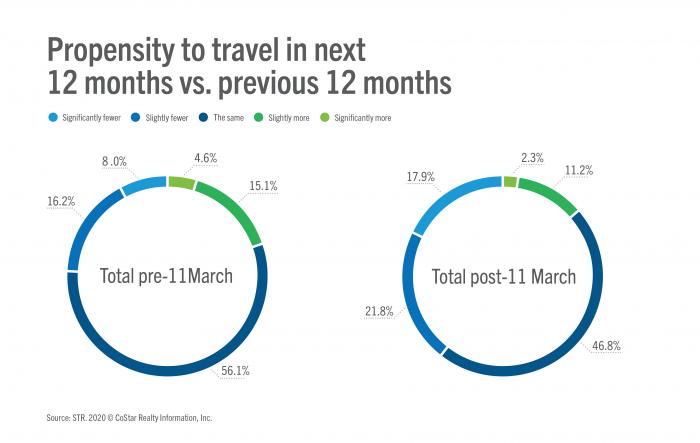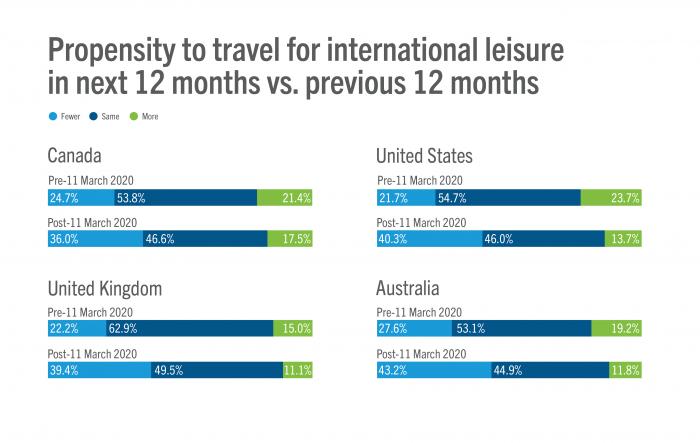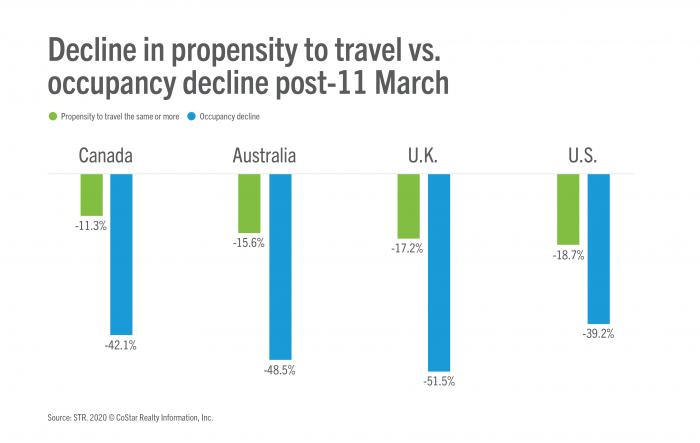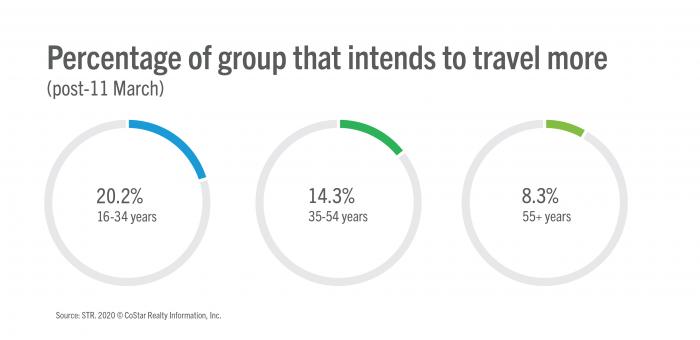COVID-19’s impact on consumer opinion and behavior seemed to evolve daily throughout March, especially with the World Health Organization (WHO) declaring a global pandemic on the 11th. To understand the effects on sentiment and future international travel plans, STR captured the views of travelers across 4 key markets: the U.S., Canada, U.K. and Australia.
These four English-speaking markets make up a significant portion of global tourism receipts—20% or US$338 billion. Given these countries’ importance in the global travel industry—collectively, they account for some 462 million consumers—we examined March 2020 reactions to the impact of COVID-19 across these markets.
Analyzing the attitudes towards travel among these four markets before and after 11 March enables an interesting comparison of how traveler views changed during the month.
Our research, which was conducted in March 2020, surveyed a total of 2,391 respondents with an interest in travel, and was split evenly across the four markets. Some interesting findings are presented below.
Desire for travel has declined but remains strong overall
The developing severity of the COVID-19 pandemic had a notable effect on intention to travel during the second half of March. As the chart below shows, appetite for travel amongst those surveyed declined during the latter half of the month, and the percentage who answered that they would travel more declined from 20% to 13%. At the same time, those who stated they would travel less increased from 24% to 40%.



